



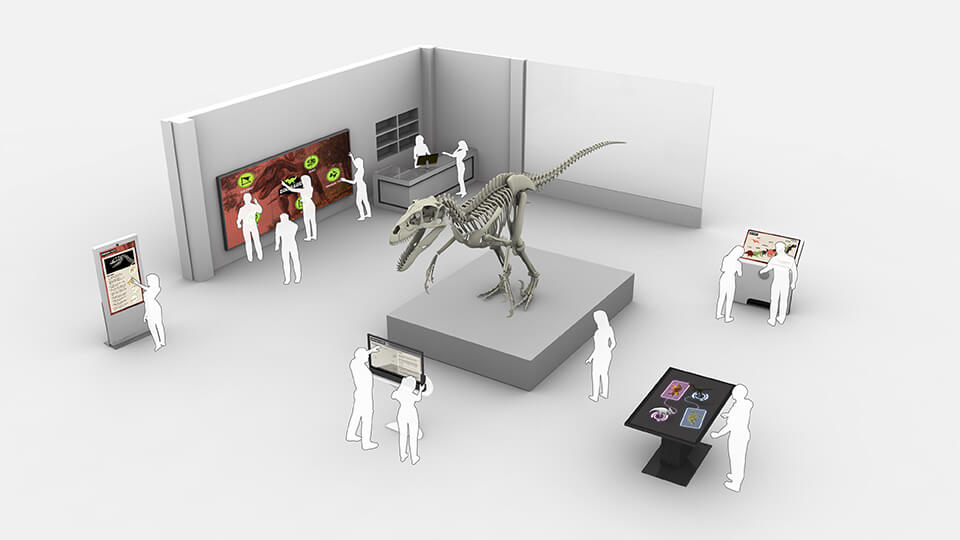
According to studies, there is still a high level of interest in visiting museums on-site. However, the museum sector continues to face a number of challenges: Competition with digital media online, declining visitor numbers, and increasing operational costs.
With the help of established digital technologies, museums can effectively integrate interactive and digital elements to enhance the visitor experience and ensure long-term relevance. What you can learn on this page:
It has been proven that interactive digital signage technologies can help to sustainably enhance the visitor experience in museums, exhibitions and science centers.
1 https://oceanoutdoor.com/ocean-news/news/new-ocean-outdoor-study-reveals-the-brand-building-power-of-full-motion-digital-out-of-home-interactive-creativity
2 https://www.arbitron.com/downloads/arbitron_digital_billboard_study.pdf
3 https://www.lavi.com/en/resources-detail/queue-management-technology
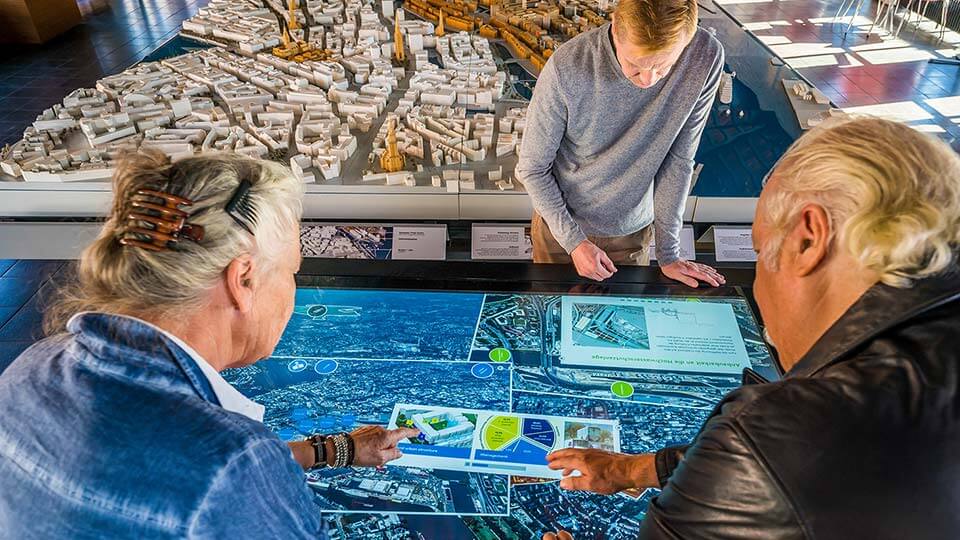
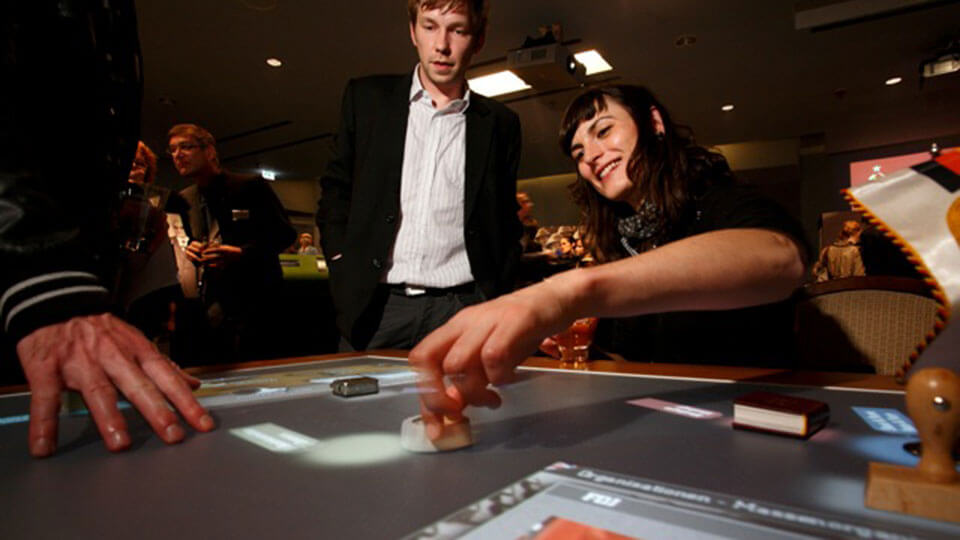
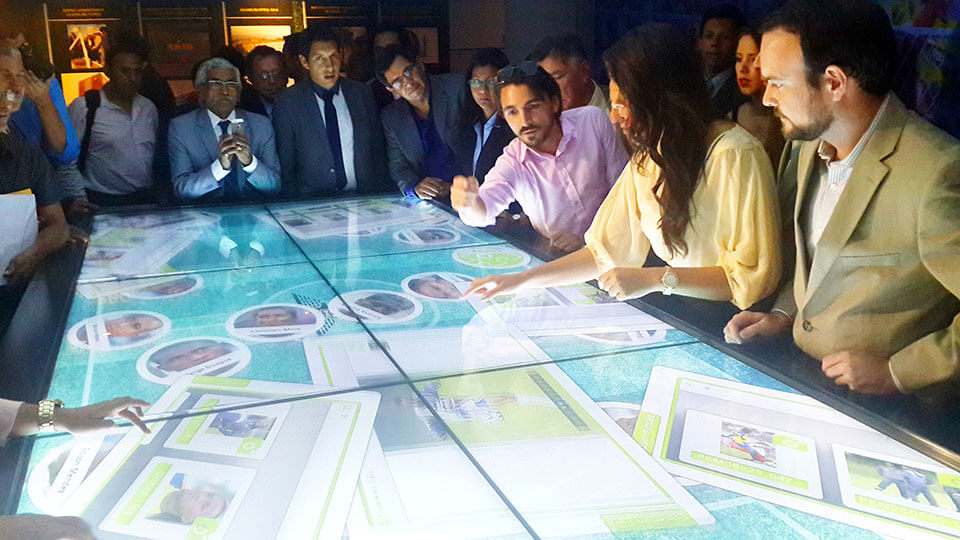
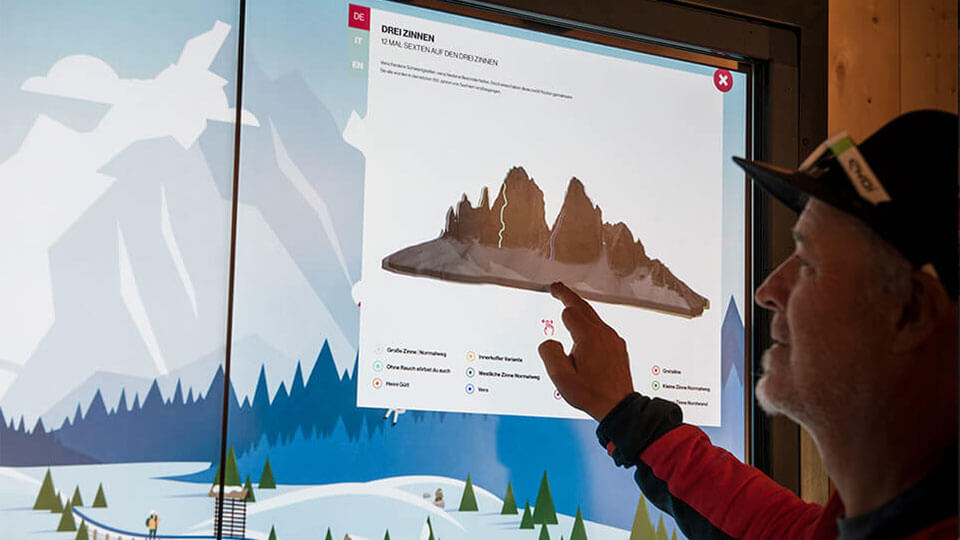
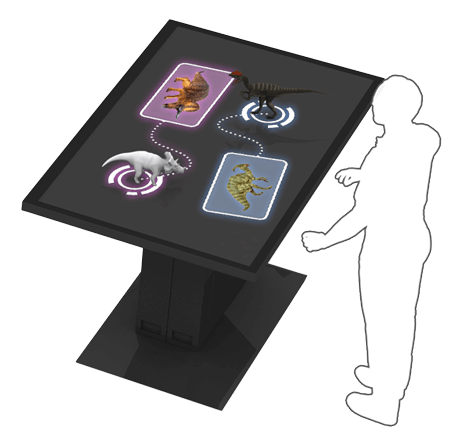
Our innovative technology for recognizing any object on the touch display brings interaction to life - simply place an object on the table to display content. Intuitive and accessible, so even older visitors can navigate with ease and enjoyment.
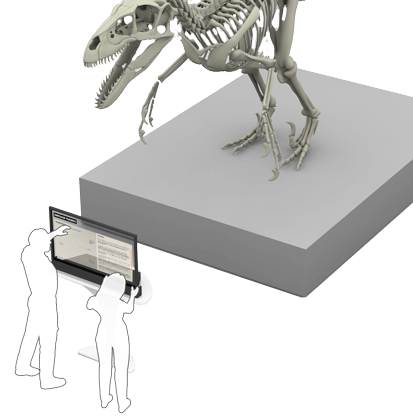
Bring the future into your museum! With semi-transparent touchscreens, digital information can be layered over a real object that is located behind the interactive display. This merges virtual content with physical elements - real augmented reality for museums, exhibitions, showrooms or science centers.
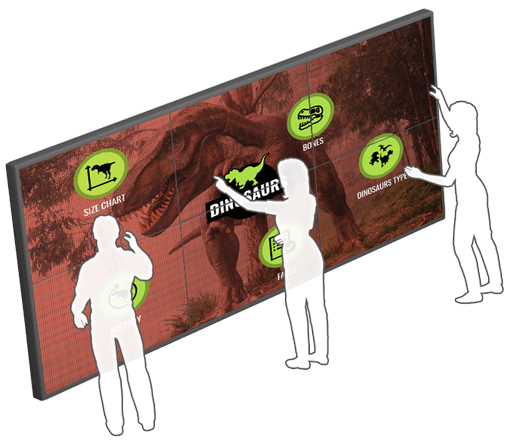
Super-sized interactive video walls can be used to create impressive virtual worlds. Thanks to true multi-touch and multi-user technology, multiple people can interact with digital content at the same time. Particularly suitable for families and groups.
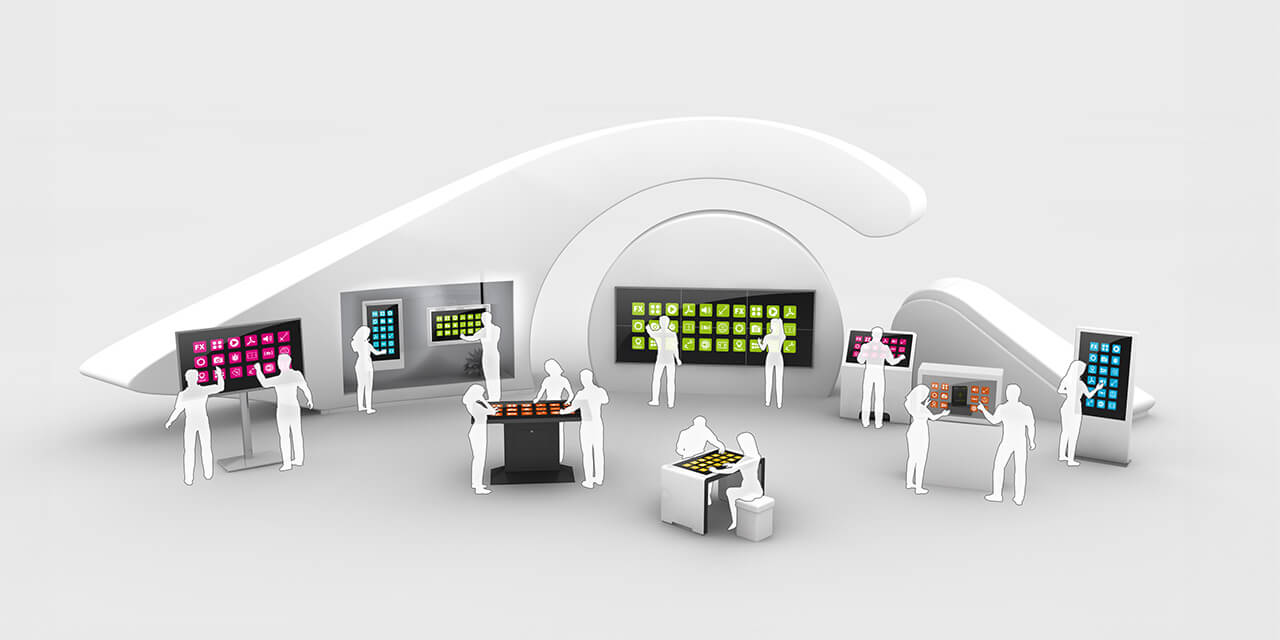
Forget about simple buttons and lame web content: When it comes to interactive multi-touch solutions, the best systems need the best software to create highly intuitive, engaging interactive experiences!
Based on eyefactive's awarded, native multi-touch and multi-user software technology, plenty of ready-to-use, customizable apps can be utilized to create amazing interactive experience with your very own content and design.
Below you will find a small selection of possible solutions based on the apps & widgets of the eyefactive touchscreen software platform.
Book Free Demo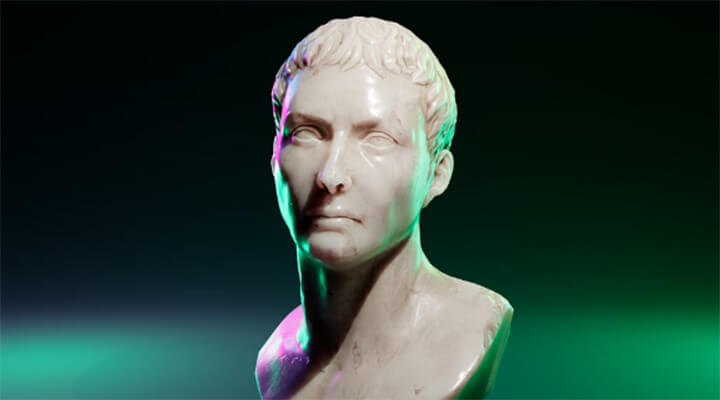
Information become vivid with interactive 3D models that can be controlled via multitouch.
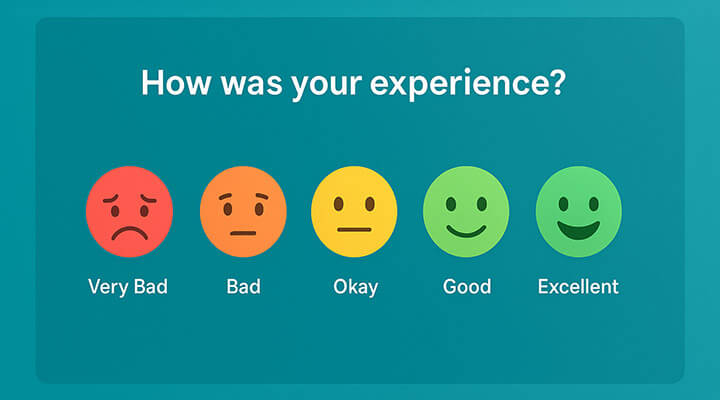
Receive valuable feedback from your visitors and guests with interactive surveys.

Inspire your visitors with interactive quiz games - to test the knowledge they have learned.
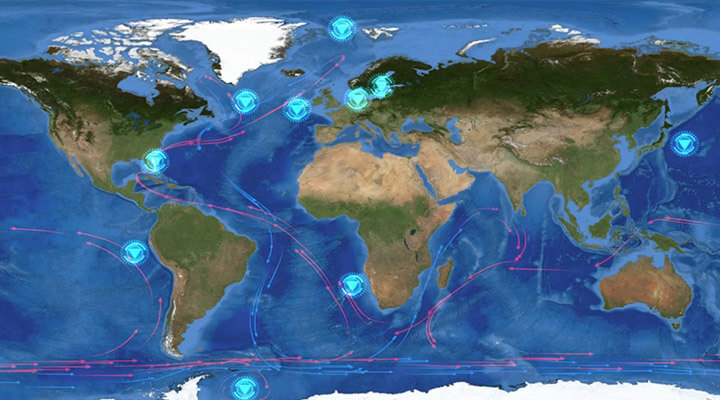
Interactive Maps with different layers and interactive infopoints.

Start audio files interactively via virtual players and hear them on individual headphones.

Interactively control 360-degree videos in all directions using multitouch gestures.

How you can decide to use digitization and interactivity in your museum of the future:
All information about eyefactive GmbH, pioneer in the field of interactive digital signage, multitouch and multiuser technology as well as innovative retail solutions.
Click on the headlines, to learn more about touchscreen software.
Interactive touchscreen solutions for museums are advanced digital systems that enhance visitor engagement and learning experiences. These solutions typically include large-scale professional touchscreens, interactive touch tables, touch steles, and super-sized interactive multitouch video walls. They allow visitors to interact with exhibits, access additional information, and explore content in a more immersive and engaging way.
These systems combine hardware, software, and technologies to create dynamic and interactive solutions. For instance, museums can use transparent OLED displays to overlay digital information on physical objects, creating an augmented reality experience. The software powering these systems, such as eyefactive's native multi-touch and multi-user technologies, enables intuitive and engaging interactions for visitors.
Interactive touchscreen solutions can transform static exhibits into dynamic, responsive experiences. They can incorporate features like 3D models, virtual simulations, personalized content delivery, and even gamified learning experiences. This technology allows museums to cater to diverse learning styles and preferences, making cultural and educational content more accessible and appealing to a wider audience.
Interactive systems in museums offer numerous benefits that significantly enhance the visitor experience and improve operational efficiency. One of the primary advantages is increased engagement. These systems captivate visitors by providing dynamic, immersive displays that encourage active participation rather than passive observation. This increased engagement leads to better retention of information and a more memorable museum experience.
Another key benefit is enhanced information delivery. Interactive touchscreens allow museums to present vast amounts of information in an easily digestible format. Visitors can delve deeper into topics that interest them, access multimedia content like videos and audio clips, and even interact with 3D models of artifacts. This depth of information caters to different learning styles and levels of interest, from casual visitors to subject enthusiasts.
Interactive systems also offer improved accessibility. They can be designed to accommodate various needs, including multilingual options for international visitors and features for visitors with disabilities. For example, audio descriptions can be incorporated for visually impaired visitors, while adjustable text sizes and colors can assist those with reading difficulties.
From an operational standpoint, these systems provide flexibility and efficiency. Content can be easily updated and managed digitally, reducing the need for physical signage changes. This not only saves time and resources but also allows museums to keep their exhibits current and relevant. Additionally, interactive systems can assist with wayfinding, reducing the workload on staff and improving the overall visitor flow within the museum.
Museums and showrooms can incorporate self-service solutions in various ways to enhance visitor experiences and streamline operations. One popular approach is the implementation of interactive kiosks throughout the museum. These kiosks can serve multiple purposes, from providing general information and wayfinding assistance to offering in-depth content about specific exhibits.
Self-service ticketing systems are another effective solution. Digital self-order kiosks can be set up at the entrance to handle ticket sales and reservations, reducing wait times and staff workload. These systems can also offer options for purchasing memberships or making donations, providing a convenient way for visitors to support the museum.
Museums can also incorporate self-service solutions directly into exhibits. For example, interactive touchscreens can be integrated into display cases or mounted nearby, allowing visitors to access additional information, view related artifacts, or even participate in quiz-like games related to the exhibit. This approach turns passive viewing into an active, self-directed learning experience.
Another innovative self-service solution is the use of personalized digital wayfinding guides.
Modern display technologies for museums are revolutionizing the way visitors interact with exhibits and information. One of the most exciting developments is the use of transparent OLED displays. These cutting-edge screens allow digital images to be overlaid on physical objects without obstructing the view, creating a seamless blend of digital and physical elements. This technology enables museums to provide additional context, animations, or interactive elements directly on or near artifacts, enhancing the visitor's understanding and engagement.
Large-scale multitouch video walls are also becoming increasingly popular in museums. These expansive interactive displays allow multiple visitors to engage with content simultaneously, making them ideal for busy areas or collaborative learning experiences. They can display high-resolution images, videos, and interactive content, providing a visually stunning and informative focal point for exhibits.
Touchscreen object recognition is an innovative technology that can significantly enhance the interactive experience in museums. This technology allows physical objects to be recognized when placed on a touchscreen surface, triggering specific digital responses or information displays. Here's how museums can effectively use this technology:
One application is in interactive artifact exploration. Museums can create replicas of smaller artifacts that visitors can place on a touchscreen table. When an object is recognized, the screen can display detailed information about the artifact, its history, and its significance. This creates a tactile, hands-on experience that combines physical interaction with digital information delivery.
Another use is in educational games and puzzles. Museums can design activities where visitors need to place objects in specific arrangements or sequences on the touchscreen. For example, in a natural history museum, visitors might arrange fossil replicas in chronological order, with the touchscreen providing feedback and additional information based on their choices.
Touchscreen object recognition can also be used for personalized storytelling. Visitors could be given tokens or cards representing different historical figures or events. When placed on the touchscreen, these objects could trigger narratives or interactive timelines related to the chosen subject, allowing visitors to explore history from different perspectives.
In art museums, this technology could be used for comparative analysis. Miniature reproductions of artworks could be placed on the screen to trigger side-by-side comparisons, detailed breakdowns of techniques used, or explorations of the artists' lives and influences. This approach can make art appreciation more interactive and engaging for visitors of all ages.
Native true multi-touch software, such as that provided by eyefactive, offers several significant benefits for museums implementing interactive touchscreen solutions. The primary advantage is the ability to support genuine multi-user interaction. This means that multiple visitors can use the same touchscreen simultaneously, each interacting with different elements without interfering with others. This capability is particularly valuable in busy museums, allowing more visitors to engage with interactive exhibits at the same time.
Another key benefit is the enhanced user experience. Native multi-touch software is designed specifically for large-scale touchscreens, ensuring smooth, responsive, and intuitive interactions. This results in a more natural and engaging experience for visitors, who can use familiar touch gestures like pinch-to-zoom or swipe to navigate through content.
The software also enables more complex and sophisticated interactions. For example, it can support advanced gestures, object recognition, and even integration with external sensors or devices. This allows museums to create highly interactive and immersive exhibits that go beyond simple touch interactions, potentially incorporating elements like 3D manipulation or collaborative problem-solving activities.
Furthermore, native multi-touch software by eyefactive comes with robust content management capabilities. This makes it easier for museum staff to update and manage the interactive content without requiring extensive technical knowledge. The ability to quickly update information or change exhibits helps keep the museum's digital offerings fresh and relevant.
Museums can effectively combine interactive touchscreen solutions with digital signage media to create a comprehensive and engaging visitor experience. One approach is to use digital signage for general information and wayfinding, while employing interactive touchscreens for more in-depth, hands-on experiences related to specific exhibits.
Large video walls can serve as attention-grabbing signage, displaying dynamic content such as welcome messages, event announcements, or rotating exhibit highlights. These can be strategically placed near interactive kiosks or touchscreens where visitors can delve deeper into the topics that interest them.
Another effective combination is using digital signage for context and atmosphere, while interactive touchscreens provide detailed information and interactivity. For example, large projection displays could set the scene for a historical period, while nearby touchscreens allow visitors to explore specific aspects of life in that era through interactive timelines, 3D models, or multimedia presentations.
By integrating both signage media and interactive touchscreens, museums can create a layered information environment. This approach caters to different visitor preferences, allowing for both passive consumption of information and active, self-directed exploration, thereby enhancing the overall museum experience.

We are pleased to support you with free, non-binding consultation - for your successful interactive digital signage project.
Simply write us via our online form - or book your personal technology session right away!
Online Form Book Online Technology Session